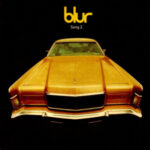 Blaxploitation films were a genre of American cinema that emerged in the late 1960s and thrived throughout the 1970s. These films were characterized by their African American leads, urban settings, and portrayals of street life, often interwoven with crime, action, and gritty social commentary. Despite their controversial nature, these films played a significant role in the evolution of American cinema and the broader cultural landscape. This article explores the origins of Blaxploitation, its rise and fall, its impact on Hollywood and black communities, and its lasting legacy.
Blaxploitation films were a genre of American cinema that emerged in the late 1960s and thrived throughout the 1970s. These films were characterized by their African American leads, urban settings, and portrayals of street life, often interwoven with crime, action, and gritty social commentary. Despite their controversial nature, these films played a significant role in the evolution of American cinema and the broader cultural landscape. This article explores the origins of Blaxploitation, its rise and fall, its impact on Hollywood and black communities, and its lasting legacy.
Origins and Context of Blaxploitation
Blaxploitation films arose during a period of significant social upheaval in the United States—marked by the Civil Rights Movement, the Black Power movement, and the broader push for racial equality and empowerment. The term “Blaxploitation” itself is a combination of “black” and “exploitation,” reflecting the genre’s reliance on stereotypes and its depiction of African American culture. The term was initially coined by Junius Griffin and Max Julian to describe the exploitation of African American audiences for profit, often through racially stereotyped and violent narratives.
The origins of Blaxploitation can be traced back to the 1960s when Hollywood was struggling to attract African American audiences. Prior to this, black actors had largely been relegated to minor roles or stereotypical characters in mainstream films. The emergence of Blaxploitation was a direct response to this gap, offering black audiences their own cinematic heroes—characters who were empowered, often rebellious, and sometimes flawed, but always identifiable within their own cultural context.
During this period, the United States was grappling with the aftermath of the Civil Rights Movement, which sought to dismantle systemic racism and segregation. While significant progress was made, African Americans continued to face economic disparity, police brutality, and social exclusion. Blaxploitation films emerged as a form of counter-narrative, providing a cinematic space where black actors could showcase their talents and where black culture could be both celebrated and scrutinized. These films often depicted protagonists who were engaged in crime fighting, drug dealing, or vigilantism, highlighting a world where traditional morality did not always apply, and justice was sought in unconventional ways.
Characteristics of the Genre
Blaxploitation films were marked by several distinctive characteristics that set them apart from other genres of the era:
- Cultural Authenticity and Stereotyping: While Blaxploitation films aimed to present black culture in a way that was more authentic than earlier Hollywood representations, they often relied heavily on stereotypes. Lead characters were frequently portrayed as drug dealers, pimps, or gangsters—figures of urban fear and intrigue. This led to criticisms of the genre for perpetuating harmful stereotypes, but for many African American audiences, these films provided a rare opportunity to see complex black characters on screen, even if they were embedded within narratives that reinforced negative stereotypes.
- Soundtrack and Music: The genre is also known for its iconic soundtracks, often featuring funk, soul, and jazz. Artists like Isaac Hayes, Curtis Mayfield, and Bobby Womack composed the music for many Blaxploitation films. The soundtrack not only complemented the films’ narratives but also introduced a new wave of African American musical talent to mainstream audiences. These soundtracks became immensely popular and are now considered classics in their own right, reflecting the vibrancy and diversity of black musical culture.
- Setting and Visual Style: Blaxploitation films were set in urban environments—mostly in the ghettos of major cities like New York, Los Angeles, and Chicago. The settings were gritty and realistic, reflecting the harsh realities of black life in America. The visual style of these films was often characterized by low budgets, but they made use of bold colors, graphic violence, and fast-paced editing to convey the urgency and energy of their stories. The camera work often highlighted the stark contrasts between wealth and poverty, affluence and deprivation, while the lighting emphasized shadows and darkness, reinforcing the themes of urban decay and struggle.
- Themes and Motifs: Common themes in Blaxploitation films included revenge, social justice, black empowerment, and the critique of institutional racism. These films often portrayed a cynical view of authority, with police and politicians depicted as either corrupt or ineffectual. The protagonists were usually antiheroes—outsiders who operated outside the law to achieve justice. This was a deliberate choice to appeal to audiences frustrated with the slow pace of social change and the lack of real progress on issues of racial equality.
Rise of Blaxploitation
The genre gained significant traction in the late 1960s with the release of films like “Sweet Sweetback’s Baadasssss Song” (1971), directed by Melvin Van Peebles. This film is often credited as the first true Blaxploitation movie and was a radical departure from the Hollywood norms. It starred Van Peebles himself as Sweetback, a young black man who is forced to flee after killing a police officer who tried to rape him. The film’s portrayal of black sexuality and its critical stance towards police brutality struck a chord with African American audiences who felt marginalized by mainstream media.
Following the success of “Sweet Sweetback’s Baadasssss Song,” other filmmakers began to explore similar themes. Films like “Shaft” (1971), directed by Gordon Parks, showcased the talents of African American actors like Richard Roundtree, who became an icon of the genre. “Shaft” introduced the character of John Shaft, a tough private detective with a conscience, who navigated the corrupt world of New York City’s criminal underworld. The film’s success was driven by its stylish direction, memorable soundtrack, and the public’s desire for strong black protagonists who could fight back against the system.
As Blaxploitation films became more popular, studios quickly began to capitalize on the genre’s success by releasing a flood of similar films. Films like “Super Fly” (1972), directed by Gordon Parks Jr., and “Coffy” (1973), starring Pam Grier, helped to solidify the genre’s place in American cinema. “Super Fly,” with its tale of a former drug dealer attempting to go straight, became a major hit, emphasizing themes of self-reliance and economic success in the black community. “Coffy,” on the other hand, portrayed a strong, independent woman taking down the system, marking a feminist turn within the Blaxploitation genre.
Controversies and Criticisms
Despite its popularity, Blaxploitation faced significant criticism. Critics argued that the genre often played into harmful stereotypes, reducing complex black characters to one-dimensional representations of criminality or hypersexuality. The films’ emphasis on crime, drugs, and violence was seen by many as reinforcing negative perceptions of African American culture. Additionally, the reliance on exploitation—both of the audiences’ desires for representation and of the filmmakers’ intentions—resulted in a backlash against the genre from both black and white critics.
Key figures within the African American community, such as the NAACP, spoke out against the genre, accusing it of profiting from the suffering of black communities without contributing to real social change. Some argued that the genre’s depiction of urban life reinforced the idea that black Americans were inherently violent or criminal, perpetuating stereotypes that had long been a part of Hollywood’s portrayal of African Americans. Critics also noted the lack of nuance in these films, which rarely addressed the systemic causes of poverty, crime, and social inequality—topics that were central to the Civil Rights Movement.
However, despite these criticisms, Blaxploitation was not just about stereotypes; it was a response to a lack of opportunities for African American artists and filmmakers. It represented a rare chance for black directors, writers, and actors to tell their own stories and control their narratives, even if the end result was sometimes problematic. The genre allowed for a kind of creative freedom that was not available in mainstream Hollywood, where black actors were still limited to supporting roles.
The Decline of Blaxploitation
The popularity of Blaxploitation began to wane by the mid-1970s, largely due to a combination of overproduction and market saturation. As studios flooded the market with low-budget films hoping to cash in on the genre’s success, quality began to decline, and audiences grew tired of the formulaic narratives. Films that had been successful early on, such as “Shaft” and “Super Fly,” were followed by numerous imitations that failed to capture the same magic. The saturation of the market with Blaxploitation films led to audience fatigue, and by the late 1970s, the genre had lost its cultural relevance.
The decline was also hastened by changes in the music and fashion industries. The soundtracks of Blaxploitation films, which had been a major selling point, started to lose their popularity as disco and punk music dominated the charts. The urban, gritty aesthetic of Blaxploitation films also became passé as Hollywood moved towards more sophisticated urban dramas, such as the works of Sidney Lumet and Martin Scorsese. Additionally, the broader backlash against exploitation in film—driven by a growing awareness of the negative impacts of sensationalized violence and racial stereotypes—contributed to the genre’s decline.
Legacy and Influence
While Blaxploitation was short-lived as a genre, its impact on American cinema and popular culture cannot be overstated. The films introduced a new wave of black stars to Hollywood, including Pam Grier, Fred Williamson, and Richard Roundtree, who would go on to become icons in their own right. These actors, known for their charisma and screen presence, broke new ground by challenging Hollywood’s racial casting conventions. They became symbols of black empowerment, representing a break from the stereotypical portrayals of African Americans in previous decades.
The genre also left a lasting legacy on the music industry. Blaxploitation soundtracks, particularly those featuring the works of artists like Isaac Hayes and Curtis Mayfield, became classics and are still sampled in contemporary music today. Songs from these soundtracks, like “Theme from Shaft” and “Super Fly,” became anthems not just for the films themselves but for a generation of music lovers. The soundtracks helped to legitimize the fusion of black music with Hollywood, paving the way for artists like Prince and Marvin Gaye to dominate the charts in the 1980s.
Revival and Reinterpretation
In recent years, there has been a renewed interest in Blaxploitation, both as a genre and as a cultural phenomenon. Films from the era are being revisited and reassessed for their artistic merit, with critics and historians noting the complexities of the narratives and the contributions of black filmmakers. Directors like Quentin Tarantino, known for his eclectic tastes in cinema, have acknowledged the influence of Blaxploitation on their work, particularly in terms of genre-blending and the use of music to set tone and mood.
The influence of Blaxploitation can also be seen in contemporary black cinema, where filmmakers like Spike Lee, Barry Jenkins, and Ryan Coogler have drawn inspiration from the genre’s willingness to address social issues through a popular medium. These filmmakers have built on the foundation laid by Blaxploitation, using their work to comment on issues such as police brutality, economic inequality, and the representation of black identity in America. The resurgence of interest in Blaxploitation films also reflects a broader cultural movement towards reclaiming black narratives and asserting agency over one’s own story.
Conclusion
Blaxploitation was a genre born out of necessity—a response to a lack of representation and an opportunity for African American artists to tell their stories on their own terms. While it was criticized for perpetuating stereotypes, it also provided a space for complex characters and narratives that had previously been denied to black audiences. The films of this era were not just entertainment; they were a reflection of the times, capturing the struggles, aspirations, and frustrations of black America in a period of great social change.
Today, Blaxploitation films are remembered not just for their flaws but for their contribution to the development of American cinema. They pushed the boundaries of what was acceptable in mainstream media and opened doors for future generations of black filmmakers. The genre’s legacy can be seen in the diversity of voices now present in Hollywood, as well as in the continued influence of Blaxploitation’s soundtracks and aesthetics on contemporary culture. The story of Blaxploitation is a complex one—one that speaks to both the limitations and the possibilities of cinema as a tool for social change.
Stream “The human Tornado” For Free
Stream “Disco Godfather” for Free
Stream “Black Dynamite” for Free
Stream “I’m Gonna Get You Sucka” for Free
This post has already been read 143 times!









